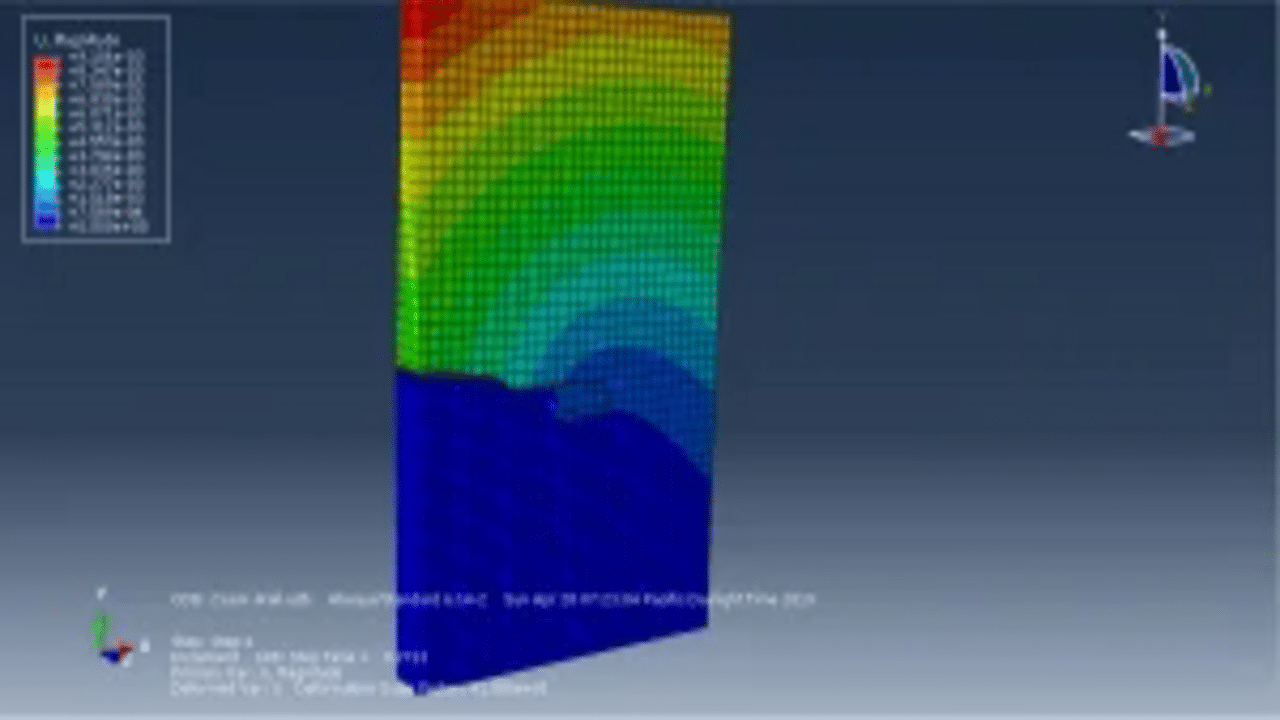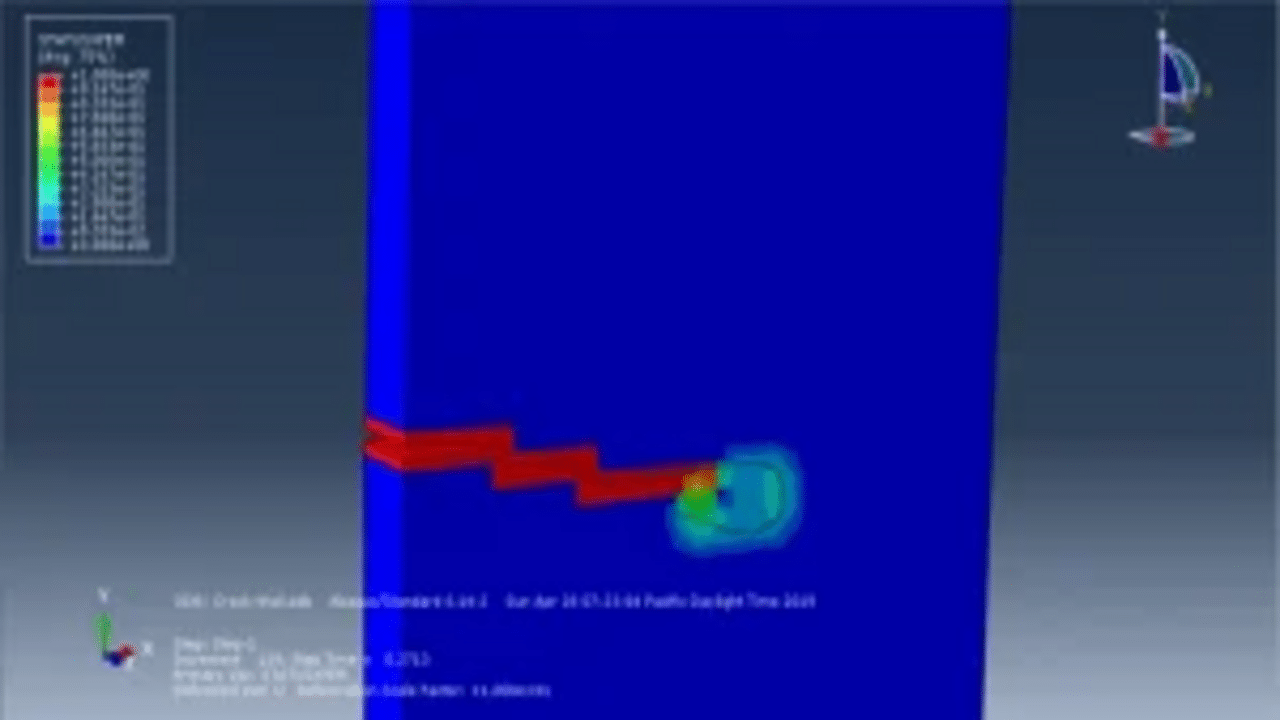





Product Overview:
In this tutorial, we study the simulation of crack growth in a concrete wall subjected to both normal and transverse loads using Abaqus. The concrete wall is modeled as a three-dimensional part, while the crack plane is defined as a shell part.
For this simulation, a traction-separation law based on the maximum principal stress and fracture energy is employed for the concrete material model. This particular material model is crucial for accurately observing physical crack propagation. A general static step is appropriate for this type of analysis.
The Extended Finite Element Method (XFEM) is utilized to model crack propagation within the concrete wall, with the crack plane defined as the initial crack location. A fixed boundary condition is applied to the bottom of the concrete wall, while vertical and horizontal pressures are exerted on the wall. It is important to note that the mesh size significantly affects the crack growth behavior.
As vertical and horizontal pressure loads are applied, crack propagation begins, following the defined crack plane throughout the simulation step.

Let’s Learn and Collaborate
Get VIP access to new content.
Sign up for weekly deals and news.
Engineering Downloads is a hub for learning,
collaboration, and sharing engineering models
and resources.
© 2025 Engineering Downloads. All rights reserved.

Want to receive push notifications for all major on-site activities?